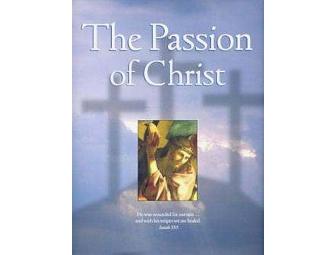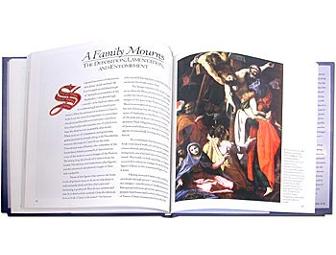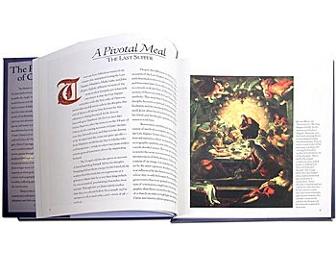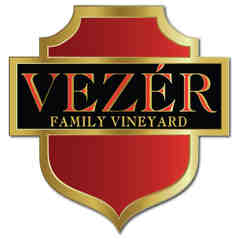Books
The Passion of Christ
- Item Number
- SCCF 24
- Estimated Value
- 22 USD
- Opening Bid
- 7 USD
Item Description
The Passion of Christ
Rediscover this powerful story through magnificent imagery and illuminating text. By Reader’s Digest Publications International
Retail Price: $21.95
About This Product
Rediscover the story of the last painful hours of Jesus’ life. This stunning book provides magnificent imagery and illuminating text to retell each pivotal moment, including:
· The Last Supper
· Judas’ betrayal
· Jesus’ trial, crucifixion, and resurrection
· And more
With more than 100 color images by such legendary Renaissance and Baroque artists as da Vinci, Caravaggio, and Rembrandt, plus extended captions to provide insights into the subject matter, the historical context, and the art itself, this unforgettable story is brought to life like never before. The Passion of Christ is an essential for every library.
New Hardcover Book, 128 pages
Author: Erika Swanson Geiss
Dimensions: 9-1/2" x 1/2" x 11"
ISBN: 141271074x
Publisher: Reader's Digest Publications International, 2004
Book review: "The Passion on Christ"
By Klint Lowry, Heritage Newspapers
PUBLISHED: June 24, 2004
While inspiration and talent are what allowed the great painters of the Renaissance to create their masterpieces, they often worked on commission rather than at the calling of their own inspiration.
The conditions were much the same recently when Erika Swanson Geiss was hired to write a book about those works of art.
"It was quite a whirlwind," Geiss said of her debut as an author. "The publisher called me quite out of the blue."
"The Passion of Christ" is a study of more than 100 pieces of art, mostly paintings, spanning the 14th through 17th centuries.
More than a simple coffee-table book, it explores both their artistic style and religious interpretations.
Geiss is a curator at the Charles H. Wright Museum of African American History in Detroit. In early March, she got a call from Publications International Ltd.
With the impending release of Mel Gibson's movie "The Passion of the Christ," various media producers, Publications International included, correctly anticipated a wave of biblical interest, particularly with the last 12 hours of Jesus' life as depicted in the Gospels.
The publisher had an idea for a book dealing with Renaissance art that depicts the Passion. Securing the rights to the images was the first step, but the company needed an expert to write the text.
"I'm a member of the Association of Art Editors, and that's how they found me," Geiss said. "Renaissance and Baroque are two of my specialties. They called and asked if I would do it."
Geiss submitted some writing samples, including an introduction, explanations of a few paintings and a rough outline for the book.
She got the job. The catch was that she had to write the whole thing in fewer than two weeks. "Originally the plan was to have it out by Good Friday," Geiss said. "They gave me really strict deadlines."
So strict, in fact, that she was done with the book by March 17.
"For me, ironically, I sort of learned the meaning of passion," Geiss said. "It flowed, even with the tight deadlines, quite effortlessly. It was an enjoyable experience."
The book divides the story of the Passion into seven chapters. In doing this, one can study consecutive images of the same scene, from the Last Supper, Christ's betrayal and arrest, his trial, the walk to Calvary, the Crucifixion, his entombment and the Resurrection.
Each picture is accompanied by a brief explanation of the painting. The result is that the reader can learn something about art in general, this art specifically and get a more thorough knowledge of the Passion story in all of its interpretations.
"It's really a synthesis of the religion and the history, looking at it through the art of the period," Geiss said.
She said she wasn't sure why the publisher wanted to cover just the Renaissance and Baroque periods. "We could have gone from the Middle Ages up through the 20th century," Geiss said.
Not that she was complaining. She had plenty to say about that period. "I think when we think of the Renaissance we think of ecclesiastical paintings," Geiss said. "We think of images of Christ and the Virgin Mary."
Looking at two portrayals of, say, the Last Supper, separated by two centuries, one can see the techniques that came to be preferred during the Renaissance and Baroque periods.
At the same time, there are clues to the society that bore these paintings.
On several occasions, Geiss points out where wealthy Renaissance patrons were included in the scenes as angels or people in the crowd.
"The pieces that were commissioned by the church or by very wealthy patrons, often in the contract it would spell out, 'I want to see this, this and this,'" Geiss said.
Back then, she explained, the well-to-do often would try to earn brownie points to get into heaven by commissioning these paintings, and they wanted to make sure they got the public credit, as well.
Another thing to remember when looking at these paintings is that this was one of the first times in history when art was produced for the general public.
What people miss when they see works like these hanging in the great halls of museums, Geiss said, is that these originally were in humble public settings.
"Given the period of illiteracy, it was really necessary for the images to capture as much about the stories as they could," Geiss said.
This was how people learned and contemplated biblical stories, she said. The paintings were meant to be studied for long periods.
It's easy to read the faces and the body language, Geiss explained. You can see the suffering, you can see the cheering rabble and you can see that the man being tortured is spiritually set apart.
"They are so narrative that even if you had only heard the stories, or even if you weren't familiar with the stories for that matter, you could come in and get a sense of it," Geiss said.
These paintings were literally meant to be worth at least a thousand words.
However, Geiss was instructed to keep each caption under 100 words. Within those guidelines, she manages to point out the most pertinent aspects of each work. She includes historical and artistic background in a way that is scholarly yet accessible to viewers regardless of their knowledge of religion or art theory.
"When they gave me the assignment I asked them, 'Who is the audience?'" Geiss said. She added, "They did not want a book that was chockfull of footnotes," Geiss said. "I had to keep remembering I wasn't writing a dissertation."
She said it was hard to pick and choose the things that were the most compelling without being redundant.
One of the additions the publisher came up with is a compendium near the back of the book that lists all of the major characters in the story of the Passion. That way, regardless of how well versed readers are with the actual Gospels, they can keep up with who's who.
"The Passion of Christ" is available at Barnes and Noble and at local Borders bookstores.
Item Special Note
Winning Bidder can pick up this item at the SCC Foundation Office, December 1-15th.
Donated By:
Solano Community College Foundation stores data...
Your support matters, so Solano Community College Foundation would like to use your information to keep in touch about things that may matter to you. If you choose to hear from Solano Community College Foundation, we may contact you in the future about our ongoing efforts.
Your privacy is important to us, so Solano Community College Foundation will keep your personal data secure and Solano Community College Foundation will not use it for marketing communications which you have not agreed to receive. At any time, you may withdraw consent by emailing Privacy@frontstream.com or by contacting our Privacy Officer. Please see our Privacy Policy found here PrivacyPolicy.











